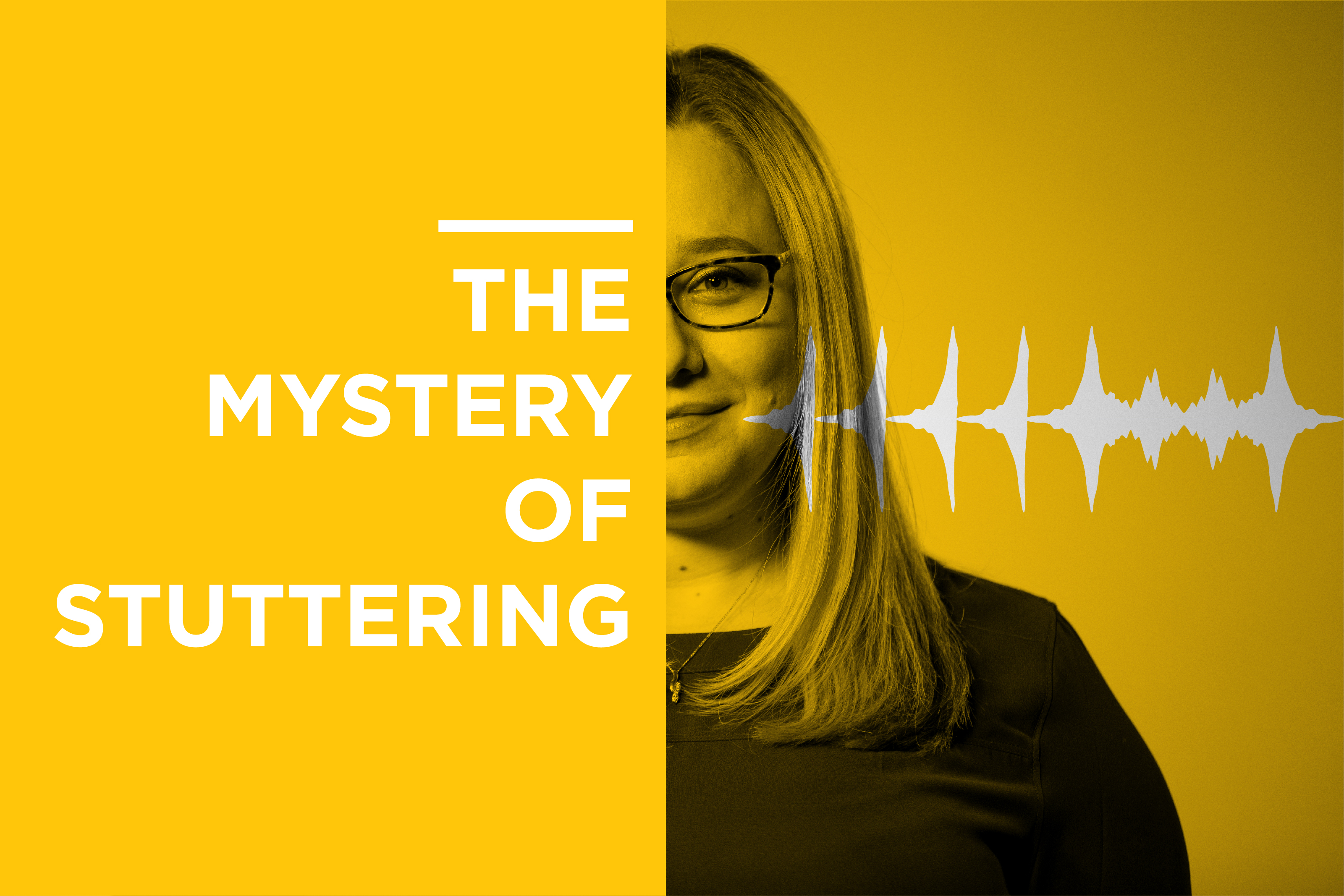From the outside, stuttering seems simple. The listener hears a disruption in speech like the repetition or extension of part of a word, or sees that the speaker is unable to speak for a short period. Many people experience stuttering as children, but most outgrow it.
From the inside, stuttering is vastly more complex. It is a condition that can have lasting effects. Why some recover from stuttering yet others don’t remains a mystery—one that has brought determined and curious researchers to the Department of Communicative Sciences & Disorders (CSD).
“[Stuttering] is not an emotional disorder — though it can have serious emotional consequences — and it is not just a bad habit that people pick up,” said Professor and Clinical Speech-Language Pathologist J. Scott Yaruss.
An Inside Perspective
For doctoral students Seth Tichenor and Caryn Herring, stuttering is more than what they research; it is something they experience in their daily lives. Tichenor and Herring grew up with pressure to actively try to prevent or hide their stuttering, and to strive to be as fluent as possible. Even as children, both were shocked by the lack of knowledge about stuttering in their childhood therapists.
“The illusion of not stuttering isn’t the same as not stuttering,” said Tichenor. “Stuttering has affected the decisions I’ve made in life, but looking back I also see the good things that being someone who stutters has taught me.”
Research has documented many cases of discrimination towards those who stutter, making it important to raise awareness and improve understanding about what the disorder truly is.
“Acceptance is a journey,” said Tichenor. He went on to describe his experience after college when he considered enrolling in grad school to study speech-language pathology. “I wanted to save kids from the crappy therapy I had as a child. The original reason for going to grad school wasn’t great, but the outcomes have been awesome. I met my wife because of it. I wouldn’t be the same person I am today if I didn’t stutter.”
Over the years, Tichenor and Herring have continued to grow through their experiences and pursue answers to the puzzling questions that stuttering presents.
“My goals changed from wanting to be as fluent as possible to embracing the way I speak and ensuring that stuttering doesn’t hold me back,” said Herring. “I was disappointed by the lack of research and understanding of how people who stutter can desensitize themselves to stuttering related fears and how they can accept the way they talk. The research I am doing, and what inspired me to go into this field, is to better understand the adverse thoughts and feelings people who stutter might have and how we can help reduce them.”
Early Childhood Speech Development
Researchers are not yet able to pinpoint indicators of whether a child who stutters will continue doing so, which can make it difficult to capture exactly how stuttering develops in early childhood. Assistant Professor Bridget Walsh, a new faculty in CSD, investigates speech development in children who do and do not stutter using a multilevel approach.
“Diagnosing early childhood stuttering in preschoolers is relatively straightforward. However, we know comparatively little about the factors influencing the developmental course of stuttering, which either progresses towards persistence or progresses toward recovery,” said Walsh. “Stuttering is a highly heterogeneous, complex disorder. It is likely that multiple factors influence persistence and recovery in preschoolers who are stuttering, so our approach incorporates multiple measures for a more comprehensive picture of stuttering development.”
Doctoral student Yiling Liu is another new face in CSD. She works with Adjunct Professor Soo-Eun Chang and is supervised by Assistant Professor Amanda Hampton Wray. Liu will soon start research that uses neuroimaging to explore structural differences in the brains of children who stutter.
“More than three million people in America and 70 million worldwide are affected by stuttering,” said Liu. “We have an urgent need to know the exact underlying neural mechanism of stuttering.”
A Glimpse of What’s Ahead
To help shed light on the enigma of stuttering, Yaruss and Tichenor are conducting the largest survey ever among people who stutter, with 400 respondents and counting.
What makes the survey unique is that it focuses on the speaker’s perspective. Previous research has emphasized the experience of the listener, limiting the understanding of what happens when someone stutters. More recent research has found that, for the speaker, the sensation of stuttering begins internally as an anticipation of difficulty speaking before it is experienced externally. Yaruss and Tichenor’s survey seeks to further explore this perspective.
Yaruss also wants to bring virtual reality (VR) into the mix. He said it’s difficult to capture the true experience of stuttering in a therapy session because of how unpredictable situations are outside a therapy room. As a result, Yaruss is investigating whether VR can be used to create controlled conditions for those who stutter to diminish speaking anxieties--an idea that has been discussed in the field but hasn’t yet been fully explored.
“This is a particularly exciting time to study stuttering, in part due to recent advances in genetics and neuroimaging that have shown us that stuttering likely involves specific genetic mutations,” said Yaruss.
With a host of dedicated researchers and cutting-edge technologies, CSD has vast potential for positively impacting the field of stuttering. The department boasts the largest number of faculty and students researching stuttering of any other university in the country and provides a richly collaborative research environment for those interested in the field.
“The CSD Department has made a concerted commitment to developing a highly significant stuttering research program,” said Walsh. “We have an unprecedented number of faculty and students at MSU researching different facets of the disorder. I’m excited to be part of this collaboration. I believe that together, we can make significant strides in unraveling this perplexing disorder.”
By Kristina Pierson
